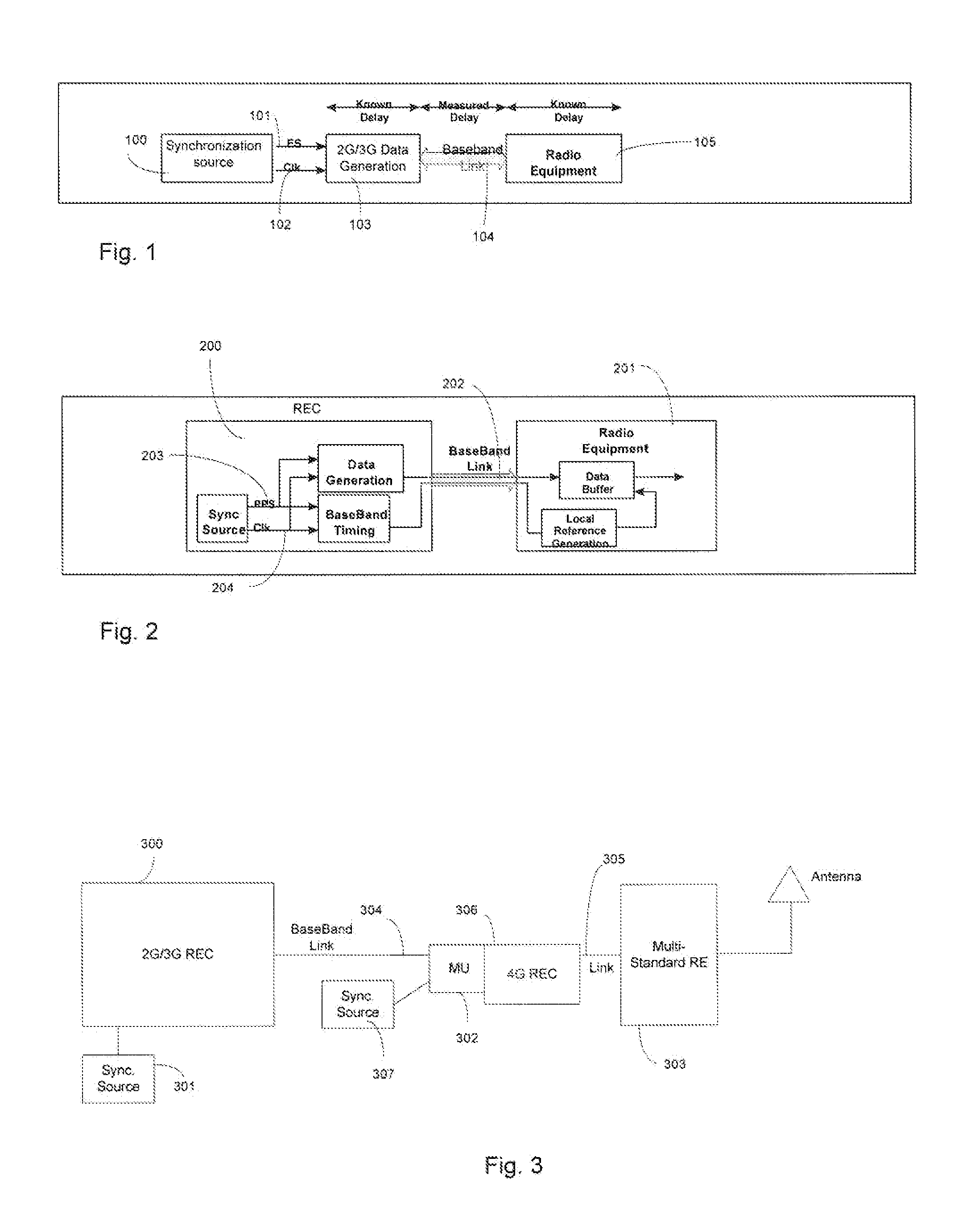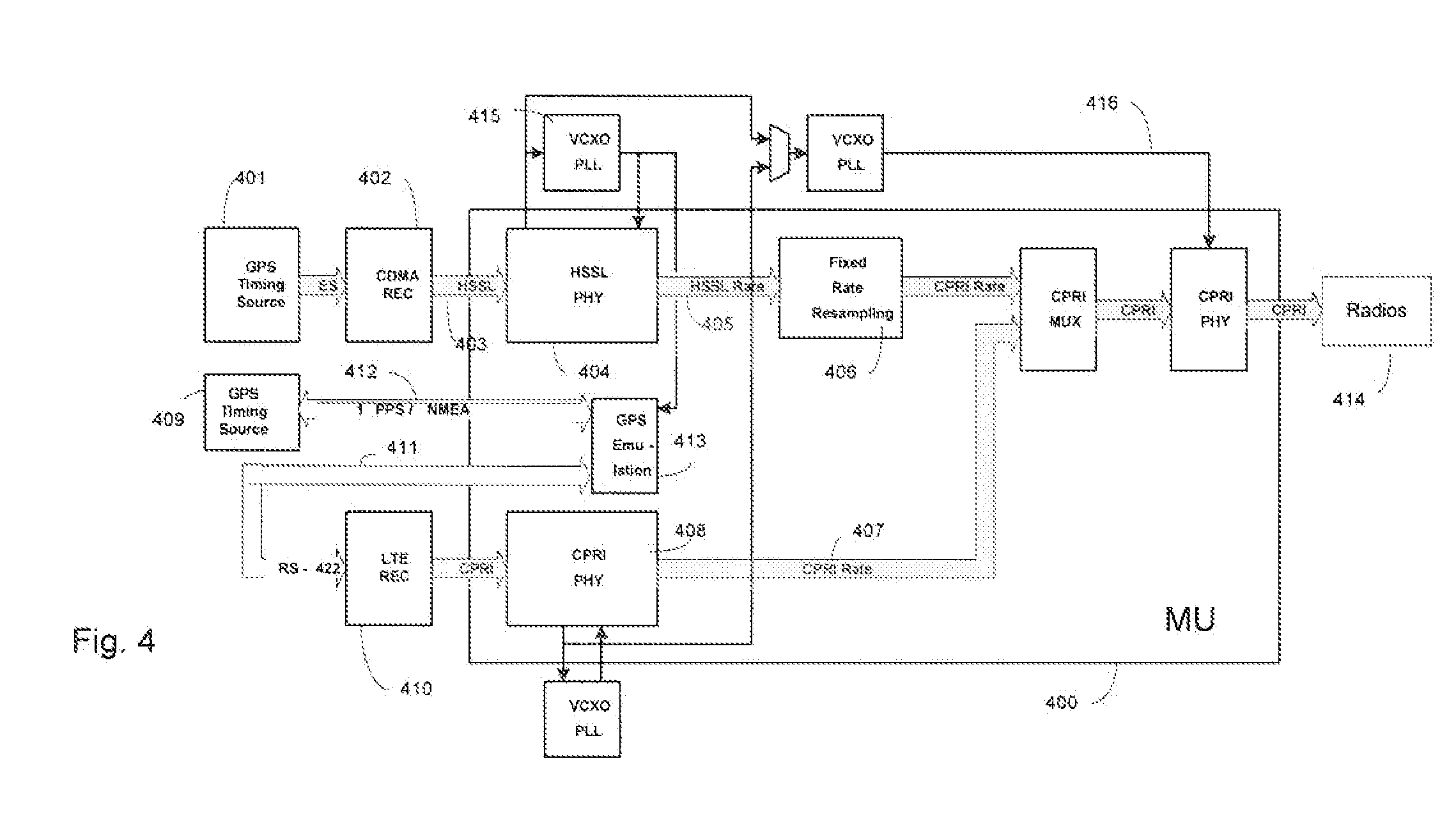Clock synchronization in shared baseband deployments
a technology of baseband and clock synchronization, applied in the direction of synchronisation signal speed/phase control, digital transmission, electrical equipment, etc., can solve the problems of high drop-off rate, impaired data services, and synchronization issues that are further dilapidating
- Summary
- Abstract
- Description
- Claims
- Application Information
AI Technical Summary
Benefits of technology
Problems solved by technology
Method used
Image
Examples
Embodiment Construction
[0017]In order to lighten the following description, the following acronyms will be used:[0018]1PPS One Pulse per second[0019]BTS Base Station[0020]CBTS CDMA Base Station[0021]LTE REC Digital Radio Unit LTE[0022]GPS Global Positioning System[0023]HSSL High Speed Serial Link[0024]OCXO Oven Controlled Crystal Oscillator[0025]PHY Physical Interface[0026]VCXO Voltage Controlled Crystal Oscillator[0027]MU Multiplexer Unit
[0028]As indicated above, the present invention addresses the issues brought out by the aforementioned prior art.
[0029]With reference to FIG. 1, we have shown a block diagram illustrating the timing principles of a 2G / 3G radio. A timing source 100, such as GPS signal creates an ES (even second) mark 101 synchronized to GPS time, along with an associated (phase-locked) clock 102. It provides these signals to the 2G / 3G Data generation equipment 103, which uses them to generate the required codes with an advance with respect to this mark. The amount of this advance is deter...
PUM
 Login to View More
Login to View More Abstract
Description
Claims
Application Information
 Login to View More
Login to View More - R&D
- Intellectual Property
- Life Sciences
- Materials
- Tech Scout
- Unparalleled Data Quality
- Higher Quality Content
- 60% Fewer Hallucinations
Browse by: Latest US Patents, China's latest patents, Technical Efficacy Thesaurus, Application Domain, Technology Topic, Popular Technical Reports.
© 2025 PatSnap. All rights reserved.Legal|Privacy policy|Modern Slavery Act Transparency Statement|Sitemap|About US| Contact US: help@patsnap.com



